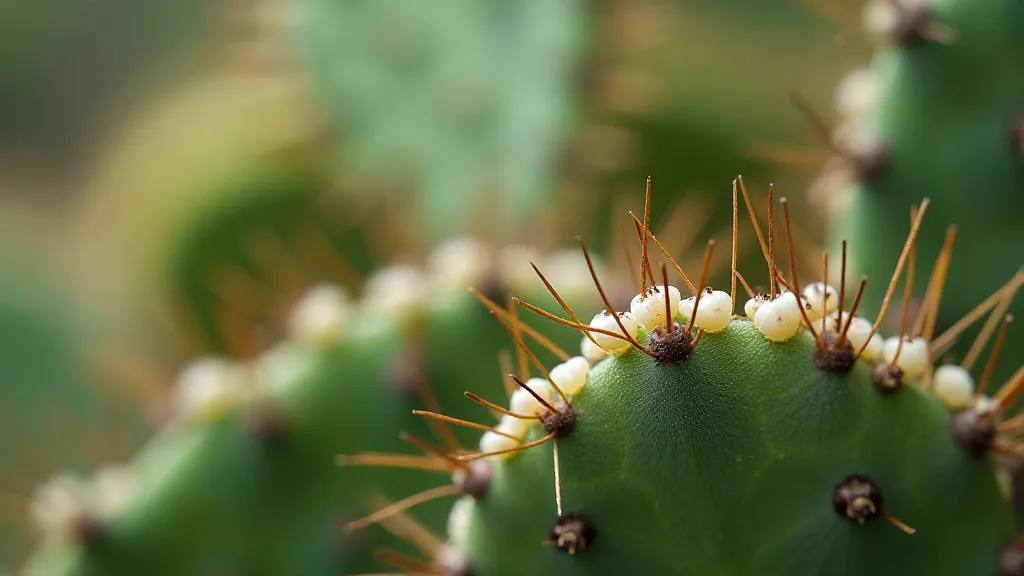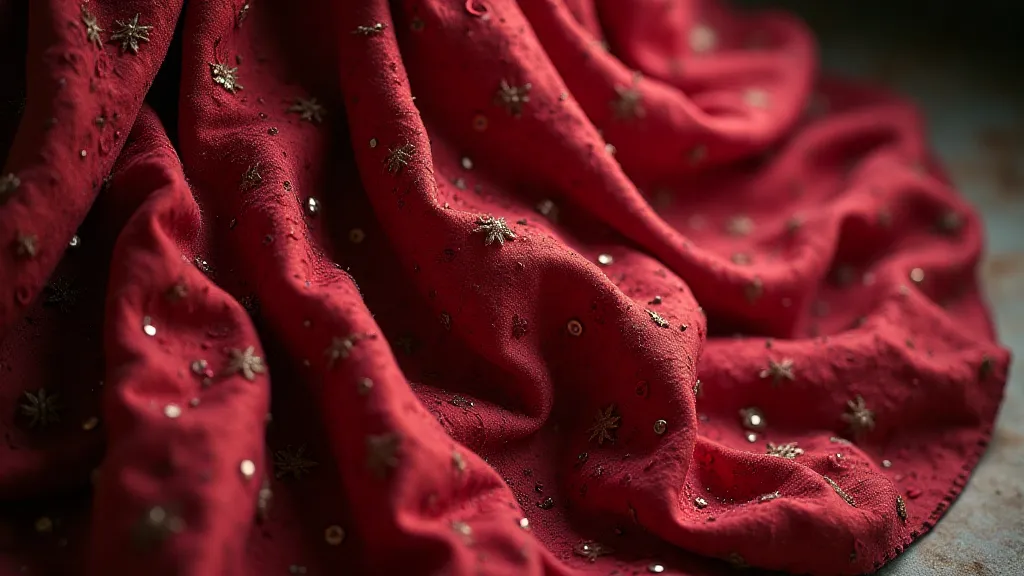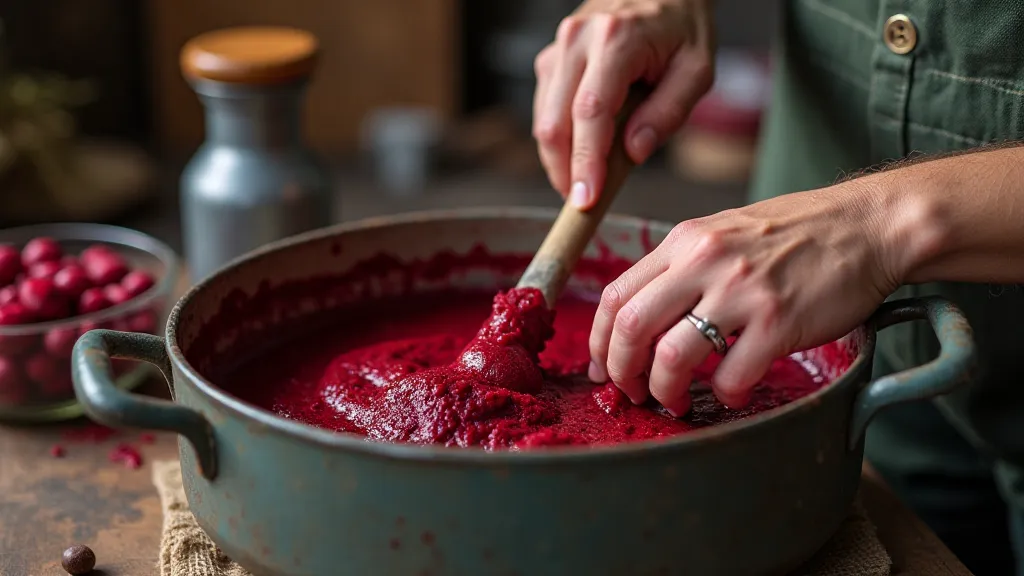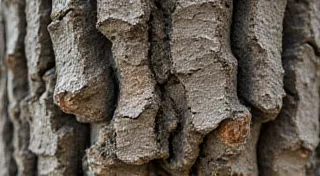The Chromatic Cartography of Cochineal
The world of color, particularly the vibrant hues we so readily take for granted in textiles, has a hidden, often brutal, history. Few pigments tell a story as compelling, as geographically expansive, and as morally complex as cochineal – a dye extracted from tiny insects, a color that has shaped economies, fueled colonial exploitation, and painted some of the most exquisite fabrics the world has ever seen.
Imagine a desert landscape, impossibly arid, punctuated by the thorny embrace of prickly pear cacti. This is Oaxaca, Mexico, the ancestral home of cochineal (
The name “cochineal” itself is derived from the Spanish "cochinilla," likely referencing the process of collecting the insects, which involved shaking the cacti and gathering the fallen bugs into cloth. These insects secrete carminic acid, which, when processed, yields a dye known for its exceptional lightfastness and vibrancy – qualities remarkably absent in many other natural dyes available at the time. Understanding how pigments interact with cloth and light is a fascinating area of study, echoing themes explored in "The Painter's Breath: Natural Dyes and the Illusion of Depth.”

From Indigenous Craft to Global Trade
Prior to the Spanish conquest, cochineal dye was traded within Mesoamerica, highly prized by indigenous artisans who used it to color clothing and ceremonial textiles. The Aztecs even used it to dye cotton for tribute to the emperor. But its true global impact began with the arrival of the Spanish in the 16th century. Recognizing its immense value, the Spanish quickly monopolized the trade, forbidding its cultivation elsewhere and ruthlessly suppressing any attempts to transplant the cacti. The control and manipulation of natural resources are frequent themes in the histories of dyes, similar to the stories surrounding the trade of indigo, as explored in “The Indigo River: Tracing Ancestry Through Dye.”
The impact on the indigenous population was devastating. The cultivation of cochineal became a brutal form of forced labor. The harsh conditions, coupled with the meager wages and the constant threat of violence, led to widespread suffering and social disruption. This wasn’t just a matter of labor; the control of cochineal production became a key element of colonial power. The history of these processes offers a stark reminder of the human cost often hidden behind beautiful aesthetics.
As demand for crimson textiles exploded in Europe, the trade routes for cochineal expanded dramatically. From Oaxaca, the dye made its way to Spain, then to France, England, and beyond. It became a coveted ingredient in the wardrobes of royalty and the elite, adorning everything from luxurious gowns to military uniforms. The vibrant red of power was, in many instances, stained with the suffering of others.
The Color of Emperors and Revolutionaries
The influence of cochineal extended far beyond the realm of fashion. Its importance to European economies cannot be overstated. Spain's control over the cochineal trade allowed them to maintain a significant degree of economic and political leverage for centuries. The dye even played a subtle role in historical events. It’s been argued that the readily available crimson dye contributed to the symbolic intensity of the French Revolution – the red Phrygian cap, a symbol of liberty, was often dyed with cochineal. The selection and symbolic use of color have always been powerful tools, shaping perceptions and reinforcing ideologies, echoing the alchemical processes that create compelling colors, as discussed in "Rust's Requiem: The Alchemy of Iron and Cloth”. Beyond its color, understanding how these processes shaped economies reveals the complexities of historical trade and power dynamics.
The demand for cochineal wasn't limited to Europe. It was also highly sought after in Asia, particularly in China, where it was used to color silk fabrics and Buddhist robes. This created complex triangular trade routes, further complicating the global economic landscape. The nuances of these processes and their interconnectedness showcase a rich tapestry of cultural exchange and exploitation.
Beyond Oaxaca: A Global Spread (and its Consequences)
Despite Spain’s best efforts, cochineal cultivation eventually spread beyond Oaxaca. In the 19th century, French and British entrepreneurs successfully introduced the insects and cacti to other tropical regions, including the Canary Islands, the Pacific Islands, and even parts of the Caribbean and South America. This marked the beginning of a gradual decline in Spain's monopoly, but the exploitation of labor in these new production centers continued.
The spread of cochineal cultivation also brought ecological consequences. The introduction of a non-native cactus species can disrupt native ecosystems, outcompeting indigenous flora and altering the landscape. The impact of introducing foreign elements into established ecosystems is a recurring theme in the history of natural resources and human intervention.

The Modern Era and Ethical Considerations
Today, cochineal dye is still used in a wide range of products, from textiles and cosmetics to food coloring. It's often listed as "Carmine" or "Natural Red 4." However, in recent years, there has been growing concern about the ethical implications of its production. Animal rights activists have raised concerns about the treatment of the cochineal insects, and many vegans and individuals with allergies have begun to avoid products containing carmine. The shift in consumer awareness surrounding the origins and ethical implications of products is a relatively recent development.
The challenge of finding vibrant, long-lasting reds from sustainable sources has spurred innovation and led to exploration of a vast array of natural pigments, and further illuminates the fascinating intersection of science and artistry. Discovering the subtleties of these naturally derived pigments is a continued area of exploration, and the principles involved are often complex, similar to the principles involved in understanding “The Alchemist’s Garden: Cultivating Natural Dyes”.
As a result, there is a growing movement to find alternative natural red dyes, such as those derived from beets or pomegranate. While these alternatives may not perfectly replicate the intensity and lightfastness of cochineal, they offer a more sustainable and ethically responsible option. The pursuit of color has always driven innovation, and the search for alternatives reflects a growing desire for harmony between aesthetics and ethics.

A Legacy of Color and Conflict
The story of cochineal is far more than just a tale of a beautiful dye. It’s a complex narrative that intertwines indigenous traditions, colonial exploitation, global trade, and ethical considerations. It reminds us that even the most exquisite colors can have a dark history, and that the pursuit of beauty should never come at the expense of human suffering or environmental degradation. Appreciating the vibrant crimson hue of a vintage textile is, therefore, appreciating a legacy that demands reflection and a commitment to more ethical and sustainable practices in the future – a chromatic cartography etched with both exquisite color and profound consequence. Further exploration into the history of color reveals a complex web of human endeavor and the consequences of our choices, reminding us to appreciate the stories woven into the fabrics we wear and the pigments that bring them to life.
The color red, in particular, often carries immense cultural and historical significance, and understanding the underlying reasons behind its use, and its frequent association with power and revolution, is crucial for interpreting its place in diverse cultures and art forms. Studying the historical use of color and the reasons behind such selections is a fascinating endeavor, and delving deeper reveals patterns and motivations that provide valuable context. The act of carefully selecting and implementing color schemes has a long history, and can be viewed as a deliberate process meant to create desired outcomes.





